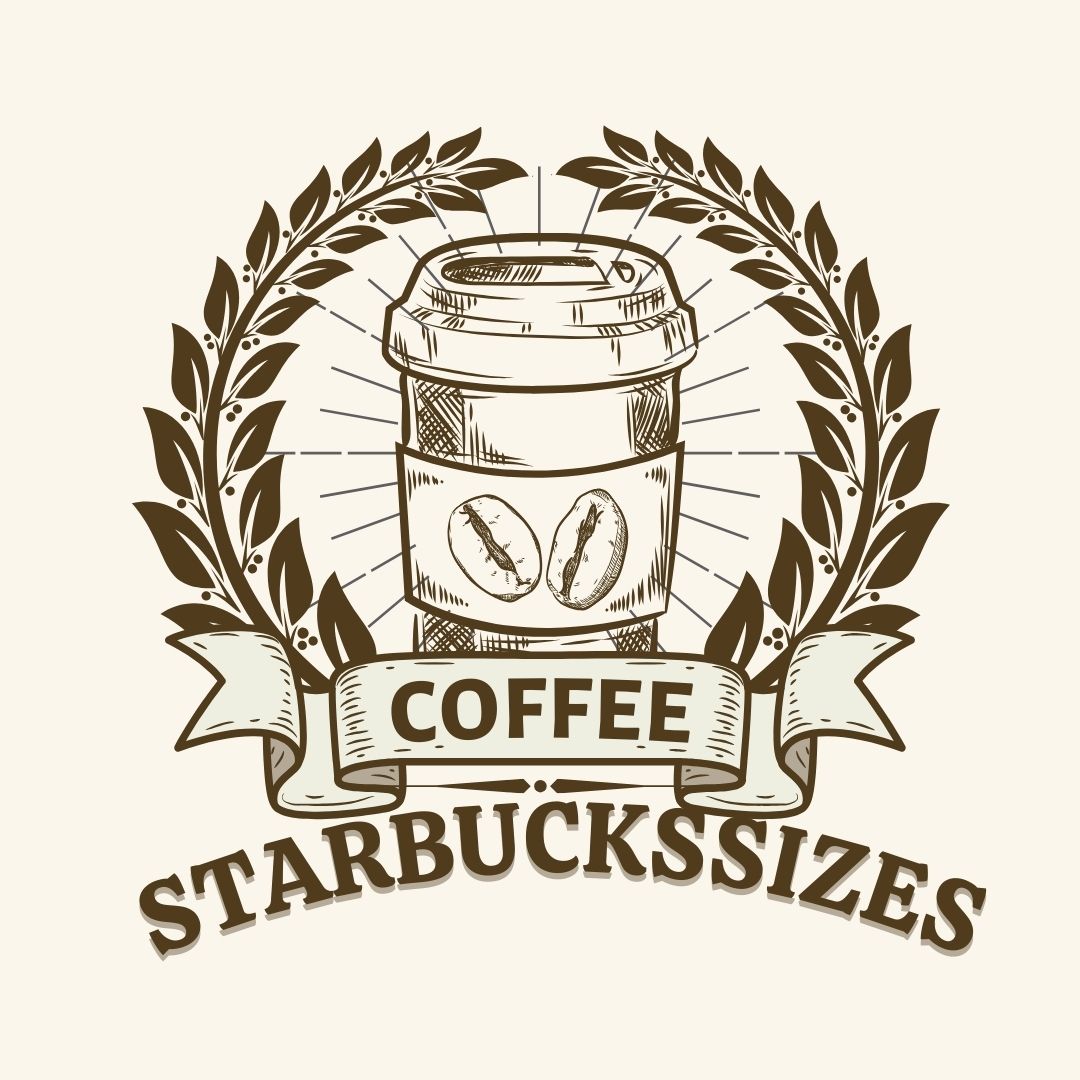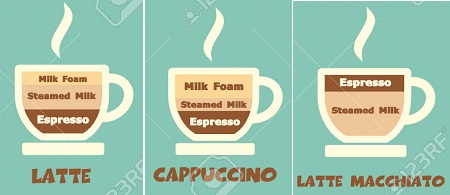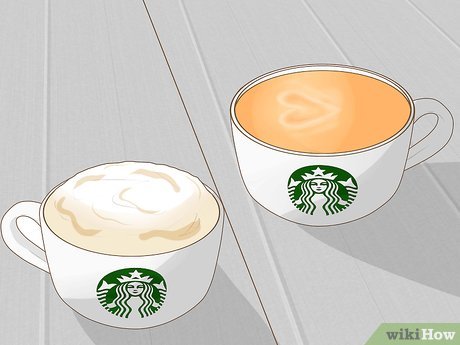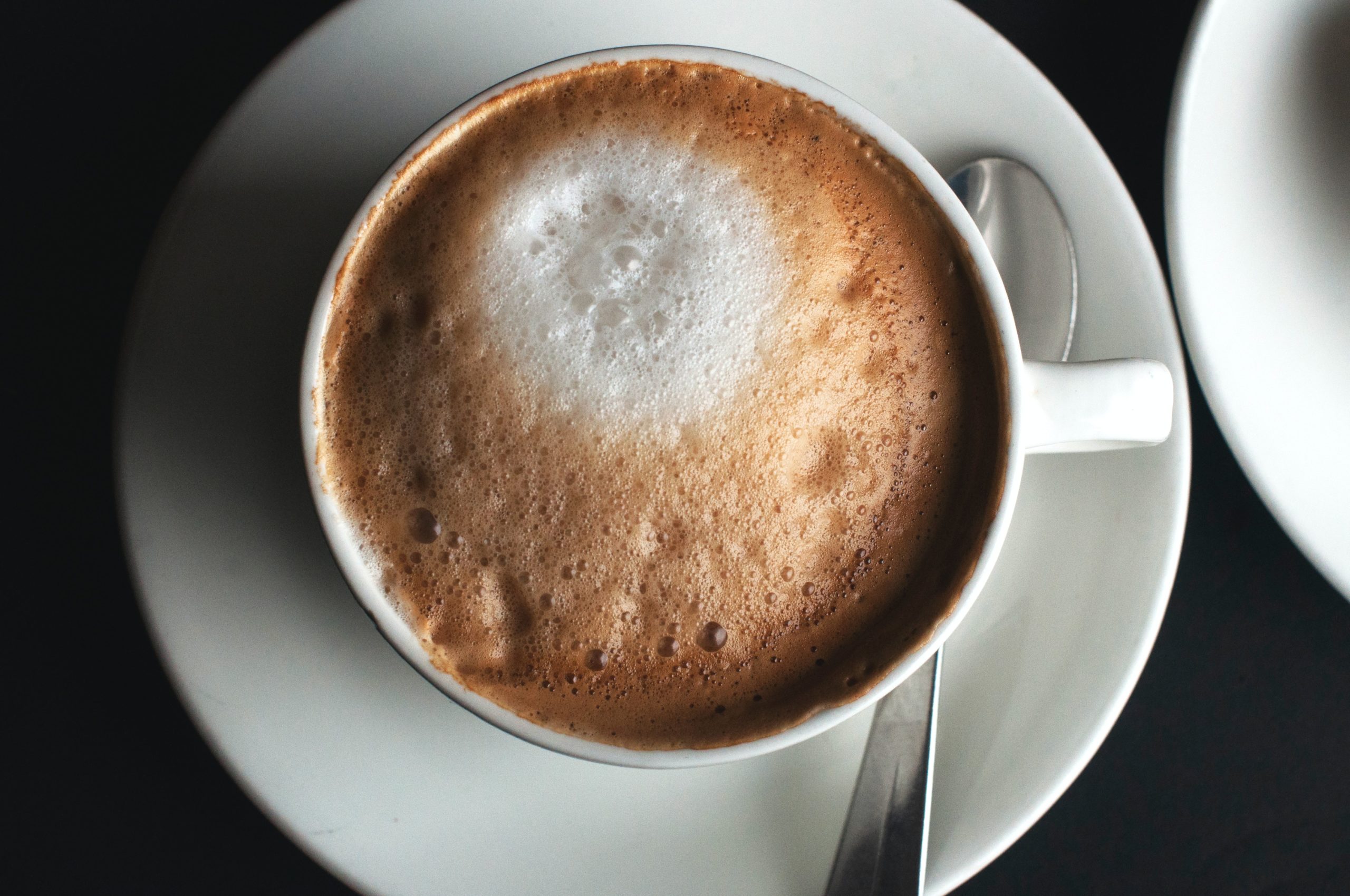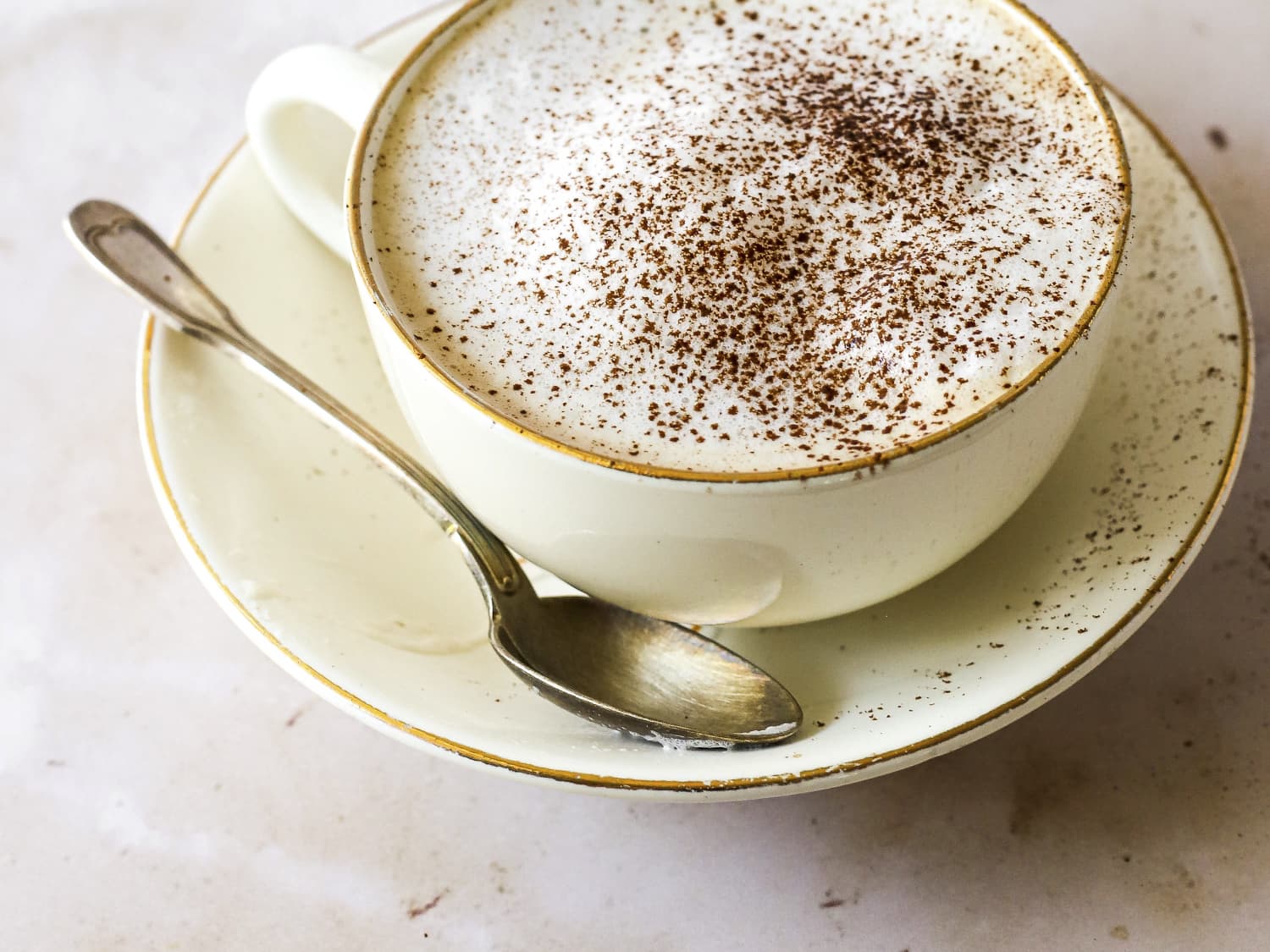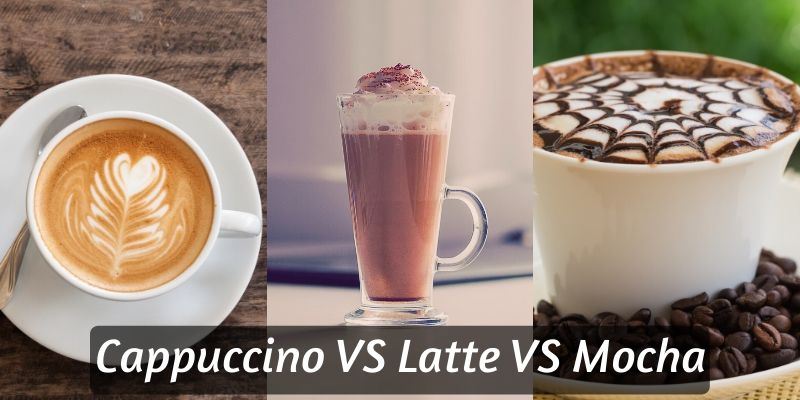Cappuccinos and lattes are two of the most crave-worthy yet calorie-laden espresso drinks globally. Their rich ingredients like steamed milk and creamy foam deliver indulgent flavors but leave coffee lovers wondering about the calorie counts hidden in each sip.
This in-depth guide will analyze cappuccino and latte calories, ingredients, taste contrasts, and preparation techniques to uncover the secrets behind these coffeehouse favorites’ caloric totals. You’ll discover pro tips for ordering lighter versions along with caffeine content comparisons, so you can enjoy every last drop of these classic coffee drinks guilt-free. Now let’s dive into decoding the mysteries around cappuccino and latte calories to decide which luxuriously flavored yet lower-calorie espresso beverage is right for you
Cappuccino Foundation: Espresso and Steamed Foamed Milk
A cappuccino starts with a base of espresso, brewed by forcing hot water through finely-ground coffee beans to extract a concentrated shot. Typically, cappuccinos use double shots of espresso for a robust, full-bodied coffee flavor.
The espresso is then combined with steamed milk that has been infused with air to create a frothy microfoam texture. This foaming process incorporates tiny air bubbles, giving cappuccinos their signature light, effervescent mouthfeel.

Traditionally, cappuccinos rely on whole milk or milk with higher fat content to achieve the ideal velvety consistency and flavor. The foam is spooned or scooped on top to produce the distinctive two-toned appearance, with the white foam capping the espresso and milk mixture beneath.
Latte Foundation: Espresso and Steamed Milk
Like cappuccinos, lattes start with shots of espresso. But the key difference lies in the greater proportion of steamed milk.
The milk for a latte undergoes a gentle steaming process that doesn’t overly aerate the texture. This preserves the milky creaminess rather than creating dry foam.
Lattes also typically use lower-fat milk varieties like nonfat milk, as the flavor pairs well with the greater volume of steamed milk in the drink. Just a thin layer of microfoam tops off the beverage.
The result is a smooth blended latte with subtle coffee notes, compared to the bold espresso punch of a cappuccino.
Cappuccino vs. Latte: Calorie and Nutrition Profile
Now that we know the ingredients, let’s dig into the calorie counts and nutritional values that set cappuccinos and lattes apart.
At first glance, lattes seem like they should carry more calories thanks to their higher proportion of steamed milk. But surprisingly, cappuccinos often contain fewer calories ounce for ounce.
Let’s look at a breakdown of calories in a 12 oz drink made with 2% milk:
- Cappuccino with 2% milk: approximately 125 calories
- Latte with 2% milk: about 175 calories
The airy foam that tops cappuccinos adds volume without packing on substantial calories. So while the thick layer of froth seems indulgent, it contributes less caloric density than the liquid milk in lattes.
However, the numbers can shift based on factors like:
- Milk type (nonfat milk cuts calories)
- Size (bigger drinks mean more calories)
- Custom add-ins like sugary syrups
We’ll explore how to minimize calories in each drink later on. First, let’s examine the caffeine content.
Caffeine Content: Neck and Neck Competition
Given their shared foundation of espresso, cappuccinos and lattes deliver similar amounts of caffeine per serving.
In an average 8-12 oz drink made with single shots, you can expect around:
- 75-100mg caffeine in a cappuccino
- 75-100mg caffeine in a latte
The extra steamed milk in a latte does not dilute the caffeine punch of the espresso itself. Only factors like number of shots or portion sizes impact caffeine levels.
The exception is drinks like macchiatos, which contain less milk and deliver significantly lower caffeine at around 85mg per 2 oz serving.
But for cappuccinos and lattes, you can count on a brisk pick-me-up no matter which foam-topped favorite you choose. Customize with extra shots or smaller sizes if you need an even bigger buzz.
Taste and Texture: How Cappuccinos and Lattes Differ on Your Palate
Beyond just calories and caffeine, these nuanced drinks each offer unique sensory experiences. Here’s how cappuccinos and lattes diverge when tasted side-by-side.
Cappuccino Flavor Profile
- Potent espresso flavor
- Frothy, almost effervescent texture
- Rich coffee taste balanced by mellowing milk
Latte Flavor Profile
- More emphasis on milkiness and sweetness
- Espresso blends more subtly with steamed milk
- Less froth makes for a smoother, creamier mouthfeel
To summarize the key contrasts:
If you want an uncompromising espresso punch, reach for a cappuccino. Craving something more delicate and milk-soothing? Sip on a latte.
Aroma and Temperature: Subtle Sensory Cues
Your nose and mouth can discern more subtle factors as you judge a cappuccino against a latte.
Cappuccinos tend to be served extra hot to maintain the layered foam integrity. Their aroma spotlights the sweet, creamy milk.
Lattes are often steamed to slightly cooler temperatures that complement the drink’s blended sensation. The smell emphasizes the steamed milk without dry foam.
Consider your personal preferences around heat. Do you enjoy piping hot drinks or like things a bit cooler? This will help inform your choice between cappuccinos and lattes as well.
Hacking the Calories: How to Lighten Up Your Capp or Latte
Now for the secrets to lightening up your favorite foam-topped drink! Here are pro tips for ordering a skinny cappuccino or latte at your local cafe.
For Cappuccinos:
- Request nonfat or low-fat milk to remove the full-fat dairy calories while keeping the froth.
- Ask for less foam or a “dry” cappuccino. More milk and less airy foam cuts calories.
- Order a smaller size like 8 oz rather than 12 oz.
For Lattes:
- Nonfat or low-fat milk drastically reduces the calorie content.
- Request an extra shot of espresso to cut the proportion of milk.
- Opt for low-calorie sweeteners like stevia instead of sugary flavor syrups.
- Ask for light foam to minimize the top layer.
- Choose a “short” latte in an 8 oz cup rather than 12 oz.
Here’s a calorie-per-ounce comparison of different dairy options:
- Nonfat milk: about 5 calories per oz
- 2% milk: approximately 15 calories per oz
- Whole milk: around 20 calories per oz
Non-dairy milks like almond, coconut and oat milk offer lower-cal options too. Avoid heavy cream!
Getting Creative: Customizing Flavor, Foam and Presentation
Beyond just ordering “skinny” capps and lattes, you can get creative with add-ins and presentation styles while keeping calories in check.
Flavor Customization:
- Sugar-free syrup flavors like vanilla, caramel and hazelnut add taste without excess calories.
- Cocoa powder or spices like cinnamon bring out flavor notes while adding minimal calories.
- Opt for stevia or other no-calorie sweeteners instead of sugar.
Foams and Toppings:
- Ask for foam alternatives like frothed low-fat milk or “dry” foam.
- For lattes, request less foam or no foam at all.
- Avoid heavy toppings like whipped cream. Enjoy a light dusting of nutmeg or cocoa powder instead.
Cups and Presentation:
- Choose a small cup size, but get creative with the vessel. Pick glassware or ceramics with unique shapes to enhance the experience.
- Ask your barista to show off their latte art skills with fun designs etched in the foam. This adds flair without adding calories!
Iced and Blended Drinks:
- Enjoy both cappuccino and latte flavors in iced or blended form for a cold, lighter calorie treat. Ask for nonfat milk and minimal sweeteners.
The key is customizing your drink specifications based on your preferences. With the right adjustments, you can still savor these coffeehouse favorites with less guilt!
Should You Sip a Skinny Capp or Latte? Factors to Consider.
With all this talk of skinny versions, you may be wondering which lower-calorie drink is right for you. Here are some factors to consider:
- Taste preferences – If you’re all about the essence of coffee, slim down a cappuccino. Love a sweeter, creamier profile? Opt for a latte.
- Consistency – Do you adore froth or want something smoother? Adjust milk ratios and foams accordingly.
- Diet – Restricted diets like vegan or low-sugar may influence milk and sweetener choices.
- Lifestyle – Consider your habits around caffeine, calories, or carbs when selecting add-ins.
- Values – Eco-conscious? Choose sustainably sourced beans and milk. Watching spending? Order small sizes or regular coffee on a budget.
At the end of the day, the best skinny cappuccino or latte is the one that caters to your individual tastes and needs. Sip your customized creation and savor every last drop – without the excess calories!
The Takeaway: Enjoy Guilt-Free Frothy Sips
Cappuccinos and lattes both carry caloric indulgence, but with the right adjustments, you can still savor your foamy favorite. Follow these tips to order a lighter capp or latte that satisfies:
- Opt for nonfat or low-fat milk
- Request less foam or skip it altogether
- Choose smaller cup sizes like 8 oz instead of 12 oz
- Avoid heavy toppings like whipped cream
- Customize with sugar-free flavors and no-calorie sweeteners
- Try creative twists like blending or icing your drink
- Let your barista dazzle with beautiful latte art over light foam
Keeping calories in check doesn’t mean sacrificing an ounce of enjoyment. Drink in the flavors, textures, and presentations that make cappuccinos and lattes so crave-worthy. But customize mindfully and you can feel good about every velvety, coffee-infused sip!
